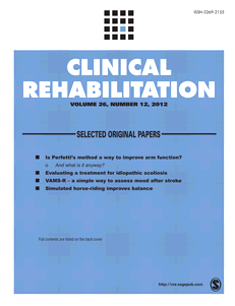
PHYSICAL THERAPY & REHAB
Core stabilization in patients with arm injury may prevent compensatory movement patterns
This report has been verified
by one or more authors of the
original publication.
Clin Rehabil. 2014 Jan;28(1):36-47. doi: 10.1177/0269215513492443. Epub 2013 Jul 3.
27 patients with elbow and wrist disorders were randomized to undergo traditional arm rehabilitation with or without core stabilization exercises. The purpose of this study was to determine whether a core stabilization program is effective in preventing compensatory movement patterns and improving physical function. Results indicated that stabilization training yielded significantly greater improvements in head, trunk and total compensation, as well as trunk strength. There were no significant differences between groups, however, in shoulder, elbow or wrist compensation, pain, joint limitation, endurance, fatigue, or disability scores.
Unlock the full ACE Report
You have access to {0} free articles per month.Click below to unlock and view this {1}
Unlock NowCritical appraisals of the latest, high-impact randomized controlled trials and systematic reviews in orthopaedics
Access to OrthoEvidence podcast content, including collaborations with the Journal of Bone and Joint Surgery, interviews with internationally recognized surgeons, and roundtable discussions on orthopaedic news and topics
Subscription to The Pulse, a twice-weekly evidence-based newsletter designed to help you make better clinical decisions
Exclusive access to original content articles, including in-house systematic reviews, and articles on health research methods and hot orthopaedic topics
Or upgrade today and gain access to all OrthoEvidence content for just $1.99 per week.
Already have an account? Log in


Subscribe to "The Pulse"
Evidence-Based Orthopaedics direct to your inbox.
{0} of {1} free articles
Become an OrthoEvidence Premium Member. Expand your perspective with high-quality evidence.
Upgrade Now













































































